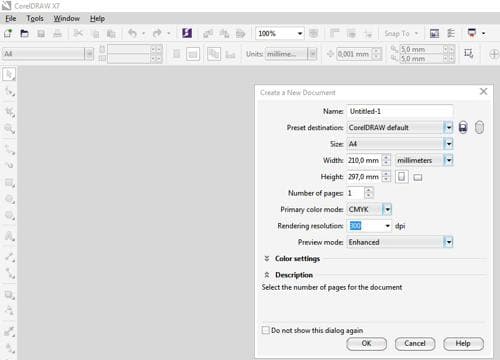- Drawing Objects Not Centered Correctly In Final Printed Outputs
- Drawing Objects Not Centered Correctly In Final Printed Output Crossword Clue
STL is the standard file type used by most additive manufacturing systems. STL is a triangulated representation of a 3D CAD model (Figure 1). The triangulation (or poly count) of a surface will cause faceting of the 3D model. The parameters used for outputting a STL will affect how much faceting occurs (Figures 2 and 3). You cannot build the model smoother than the STL file. If the STL is coarse and faceted the physical 3D printed model will be coarse and faceted as well.
However, the smoother/ less faceted your surface is, (the higher the poly count or triangulation) the larger your file. 3D printing can only accept a certain file size; therefore it’s important to find a balance between your model, its desired surface, and the 3D printing process of your choice. When exporting to STL in your CAD package, you may see parameters for chord height, deviation, angle tolerance, poly count, or something similar.
Any page numbers in the header or footer will appear sideways on the left or right of the printed page. And should be correctly centered. In the Drawing Tools. In this post, Adobe Illustrator will be used to create a three-color screen print using a fictional company logo, and have it set up to allow a screen printer to easily print the color separations that create the separate screens for each color print.
These are the parameters that affect the faceting of the STL. We’ve compiled tips on exporting for the best “surface: file” size ratio below. Preparing your files The following step-by-step instructions for converting CAD files to STL came from each CAD software company’s website or from 3D printing and design user forums; it’s an overall simplified step-by-step process from the greater 3D printing community.
If your CAD software is not listed below or if you require additional assistance, please contact your CAD software technical support for information about exporting to an STL. Select your CAD software: 3D Modeling for Beginners. 3D Modeling for Engineers. 3D Modeling for Artists. Don't have CAD software? SolidView is an affordable solution for non-CAD users to prepare STL files from many popular CAD formats.
Tinkercad is great for 3D printing simple geometrical objects. Its interface was created with 3D printing in mind. Design Download for 3D Printing.STL SketchUp does not offer STL creation directly within the program. Download the extension for.STL (note: this plugin is open-source and updated frequently). Download and install the plugin. Select Tools Export to DXF or STL and select the units for your model (millimeters is recommended) Tip: SketchUp isn’t inherently built for model production therefore it’s useful to check your SketchUp file for additional feature accuracies once it’s exported from the interface.

We recommend uploading your SketchUp file into (a free program from Autodesk) to check your file for faceting and fix any surface flaws. Note: We don’t recommend Sketchup for use with 3D printing as it does not export well and is best for early design sketches rather than producing physical models. Select IPro Print 3D Print Preview. Select Options and choose desired resolution and click OK. Within the preview window, select Save Copy As or Send to 3D Print Service. Save As type to STL File (.stl) Note: The “High” setting will also produce the largest file size. From Low, Medium to High, the hairdryer sample file in Inventor went from about 6.7MB to 17.6MB to 50MB.
Tip: Before finalizing your export, select the Options tab. Within this window, you can select the resolution (faceting) for your model (High, Medium, Low and Custom) and check that your units are correct. The “High” setting will produce a large file size. Autodesk Inventor allows you to save both individual parts and assemblies in STL format, at all design levels. For a quick overview of designing in Inventor, click. To check your modifiers have been applied before exporting:.
Drawing Objects Not Centered Correctly In Final Printed Outputs
Tools Rebuild All (this ensures that the design data contains recent changes, and that it is not corrupt). File Save Copy As STL (.stl). Select High and click OK Note: To change the values associated with each of the resolution settings (High/Medium/Low) you need to edit the Windows registry.
Drawing Objects Not Centered Correctly In Final Printed Output Crossword Clue

Select STL command (we recommend setting maximum segmentation to 0.015 mm). Select the model Yes Export Note: CATIA V5 is capable of creating STL files from CATPart files, but not from assemblies (CATProduct files) or geometrical representations (car files). Therefore, source files, including those saved in a neutral format (i.e. STEP or IGES), must be saved as CATParts. If the source design was saved as an assembly, it is imported to CATIA as a CATProduct. To create an STL file from it, you must first convert it to a multi-bodied part.
The procedure described below is one of several methods for doing this.